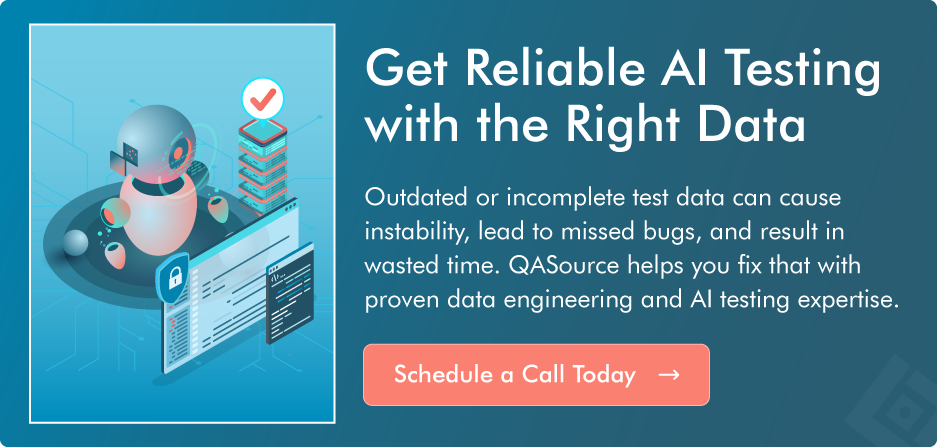
AI-powered test automation is changing how software gets tested. It promises faster feedback loops, smarter prioritization, and reduced script maintenance. However, many teams fail to realize these benefits because their testing data is incomplete, inconsistent, or poorly managed.
Test data forms the backbone of any AI-driven testing effort. Without reliable inputs, even the best AI models will make bad predictions, ignore edge cases, or generate flaky scripts that break frequently. Before blaming tools or algorithms, ask this: Is your test data good enough for AI to work?
In short: your AI is only as good as your data.
Why Most AI Testing Efforts Fail Because of Poor Data
AI testing initiatives often struggle not because of flaws in the tools or algorithms, but because of poor data foundations. Many teams jump into automation without first addressing the quality, structure, and coverage of their test data. Common missteps include:
- Relying on outdated or manually curated test datasets
- Using production data without proper filtering or context
- Skipping labeling or tagging that helps AI distinguish outcomes
- Ignoring edge cases and variations in user behavior
These gaps lead to unreliable predictions, missed defects, and scripts that break with minor changes. To build successful AI-powered test automation, test data must be treated as a core asset, not an afterthought.
The Consequences of Inadequate Test Data
When test data is incomplete, outdated, or poorly structured, it directly weakens the effectiveness of AI testing. Models trained on low-quality data fail to generalize, produce unreliable results, and often reinforce destructive patterns. Here are the common issues that arise:
| Data Problem | Impact on AI Testing |
|---|---|
|
Outdated test data
|
Scripts fail when the application changes
|
|
Poor labeling
|
AI cannot prioritize or classify test cases accurately
|
|
Lack of diversity
|
Rare scenarios and edge cases are not tested
|
|
Redundancy
|
Test suites become bloated and inefficient
|
|
Siloed datasets
|
Teams miss opportunities for reuse and coverage optimization
|
Even the most advanced AI test platforms cannot overcome the limitations of weak data. Automation efforts stall, and teams revert to manual testing or excessive maintenance.
Strategic Mistake: Incremental Approaches to Data
Many organizations approach AI testing cautiously, running limited pilots or applying automation to narrow tasks. While this may reduce risk in the short term, it often leads to long-term stagnation. The reason is simple: small, isolated efforts rarely produce the volume and variety of data needed for AI to improve.
Incremental approaches also create fragmented data environments. Different teams collect and utilize data in various ways, lacking a unified strategy. This results in:
- Inconsistent data quality across test areas
- Duplicate or conflicting test records
- Limited feedback loops for continuous improvement
- Slower model learning and adaptation
How to Fix Data Problems in AI Test Automation
Improving test data is not just a technical task; it is also a strategic one. It requires defined processes, clear ownership, and the right tools. Use the following steps to strengthen your data foundation and improve the performance of AI-driven testing:
-
Perform a Complete Data Audit: Review your existing test data sources. Identify gaps in scenario coverage, outdated inputs, duplicated records, and areas lacking user variability.
-
Label and Structure the Data: Tag all test cases with relevant information such as outcome type, test priority, flow name, and expected behavior. Structured and labeled data allow AI to learn and make decisions more effectively.
-
Generate Synthetic Data to Fill Gaps: Create synthetic test data for underrepresented scenarios like edge cases, failure conditions, and non-standard inputs. This increases coverage without waiting for real-world events to occur.
-
Monitor Data Relevance Over Time: Test data loses value as applications evolve. Regularly verify that the data reflects the latest workflows, user behavior, and technical architecture.
-
Use Feedback to Improve Continuously: Feed test execution results back into your data pipeline. Learn from failures, skipped cases, and false positives. Adjust the dataset to reduce noise and improve future predictions.
Conclusion
AI test automation only works when the data behind it is reliable. If your test data is outdated, incomplete, or poorly labeled, your automation will break, your test results will be inaccurate, and your team will spend more time fixing problems than finding bugs. Improving test data is the first step toward achieving stable and effective AI testing. Focus on quality, structure, and coverage.
If you're unsure where to start, QASource can help you build the right data foundation for AI-driven testing. With the right data in place, your automation becomes faster, smarter, and easier to maintain.


Post a Comment